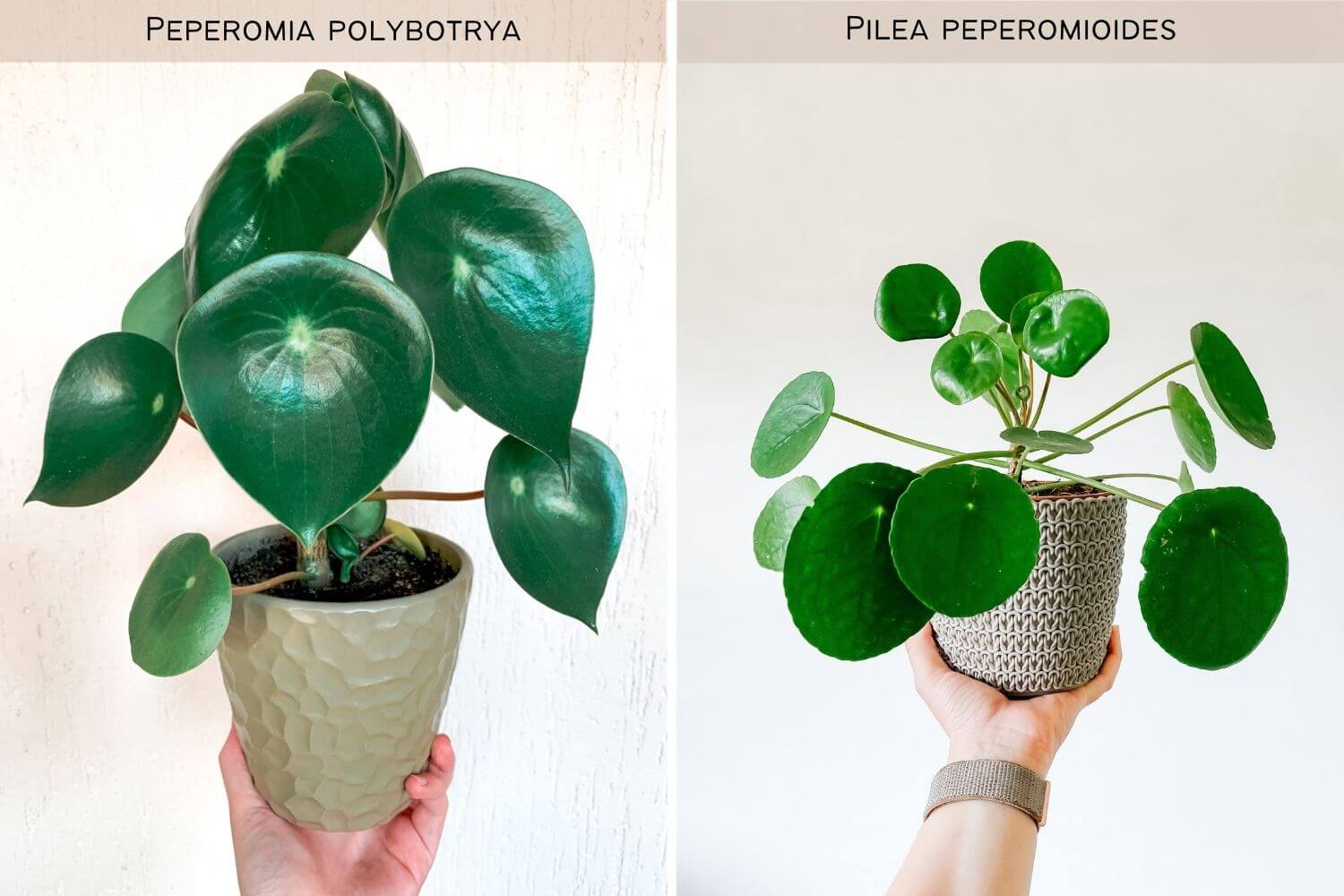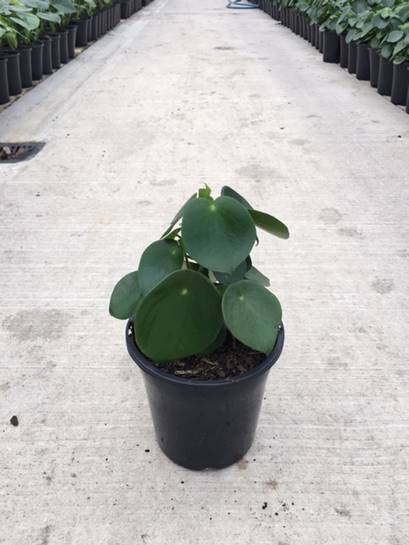

If you plan on growing it indoors, place it near a window with bright, indirect light for the best results. One critical thing to remember about peperomia raindrop care is that it’s a hardy plant that doesn’t depend on direct sunlight. Pilea peperomioides plant Peperomia polybotrya raindrop Peperomia polybotrya raindrop How much light does a peperomia raindrop need? But damnit if the big, showy leaves on each of these plants don’t make them look pretty similar! Check it out, and then we’ll move along to caring for the raindrop. Peperomia raindrops, on the other hand, grow from thick stems and do not send out runners and reproduce like the pilea peperomioides plant does.

They can be chopped off and easily propagated, which is the reason this plant is often called the “pass it on plant.”

The plant also sends runners out under the soil to produce baby plants, which are literally smaller versions of the mother plant. Pilea peperomioides plants (aka Chinese money plants), generally have a single main woody-looking stem and mother plant that grows up and sprouts new leaves from the top as it gets taller. This is all to say that despite the fact that they have similar appearances, they are not closely related at all.

The peperomia raindrop/polybotrya also hails from Central and South America, while the pilea peperomioides comes from China, which is pretty much clear across the world. Like, one group down from the classification of “plantae kingdom.” I’m not going to pretend I’m some sort of botanist here, but I think we all know that the plantae kingdom is literally “plants.” So the biggest group you can get! They do belong to the same clades (angiosperms and tracheophytes), but those are really, really big groups. Rosales (order) > Urticaceae (family) > Pilea (genus) > peperomioides (species) Piperales (order) > Piperaceae (family) > Peperomia (genus) > polybotrya (species) They aren’t even really related, if you can believe it. The peperomia raindrop and the pilea peperomioides are not the same plant. I want to clarify something before we get rolling on the care guide. They prefer warm, shady, humid environments, and they have been cultivated in most tropical and subtropical regions in the world. The peperomia raindrop specifically is native to tropical regions in Central and South America, namely Colombia and Peru. Most are small perennial epiphytes that grow on wood and rotting trees. The name Peperomia polybotrya comes from the Greek language and translates directly to “resembling many peppers.” The genus peperomia is found all across the globe, including in South America, the Philippines, Australia, and parts of Africa like Madagascar. There are thousands of species in the genus peperomia, including the plant we’re focusing on, the Peperomia polybotrya or the “ peperomia raindrop.” Other common names include the coin-leaf peperomia, coin plant, and even Chinese money plant, though that is usually more commonly used to refer to the pilea peperomioides (more on that in a bit). Their sturdy stems and fleshy leaves make them sound kind of like a succulent-they aren’t succulents, but their care is pretty similar to succulent care. They make great additions to any room in the house because they aren’t difficult to care for and come in a compact form, only growing to be a foot tall. The peperomia raindrop makes a gorgeous houseplant because of its large glossy, heart-shaped leaves.
Raindrop peperomia care how to#
If you’ve recently acquired a peperomia polypotrya (aka raindrop) and aren’t sure how to care for it, this is your guide! Peperomia raindrop care is easy, and that’s probably why it is quickly becoming a trending plant! Peperomia raindrop care and propagation (Peperomia Polybotrya)


 0 kommentar(er)
0 kommentar(er)
